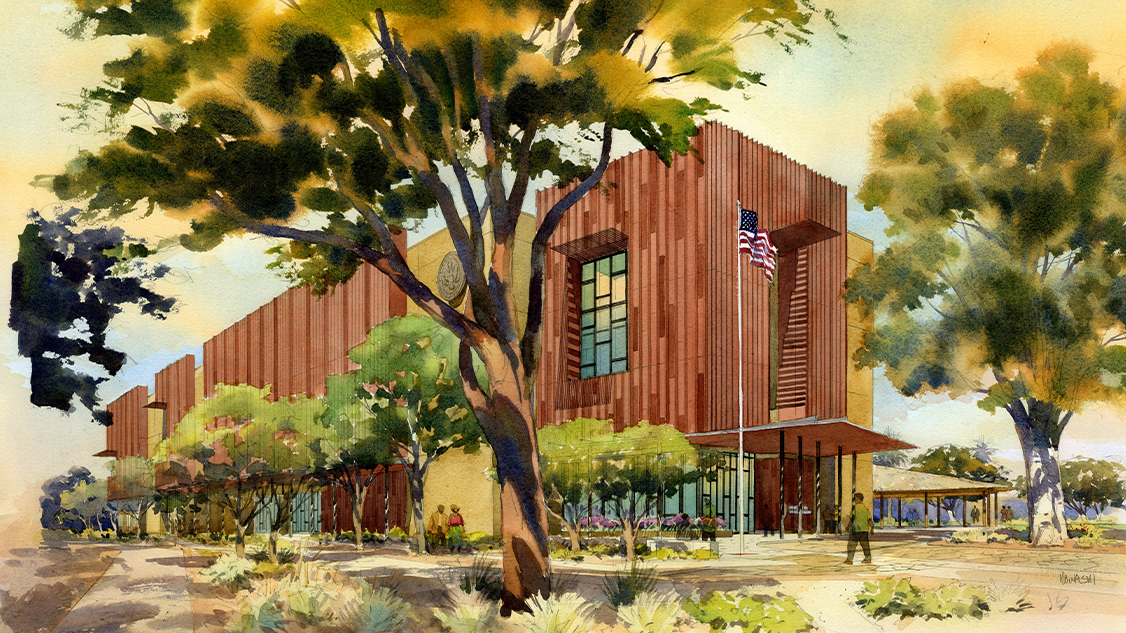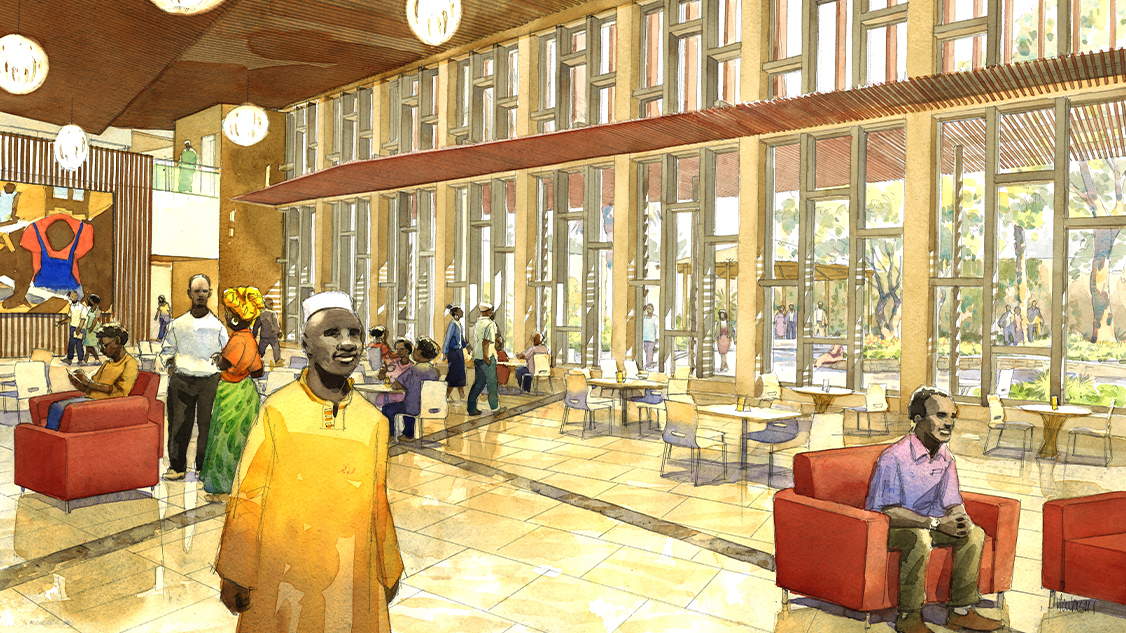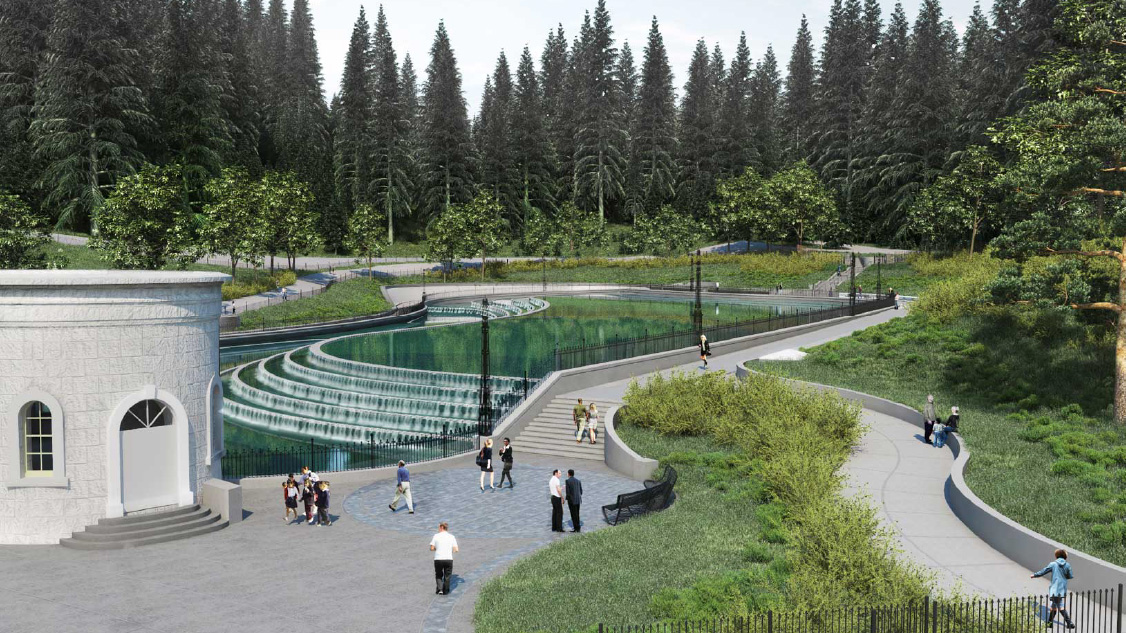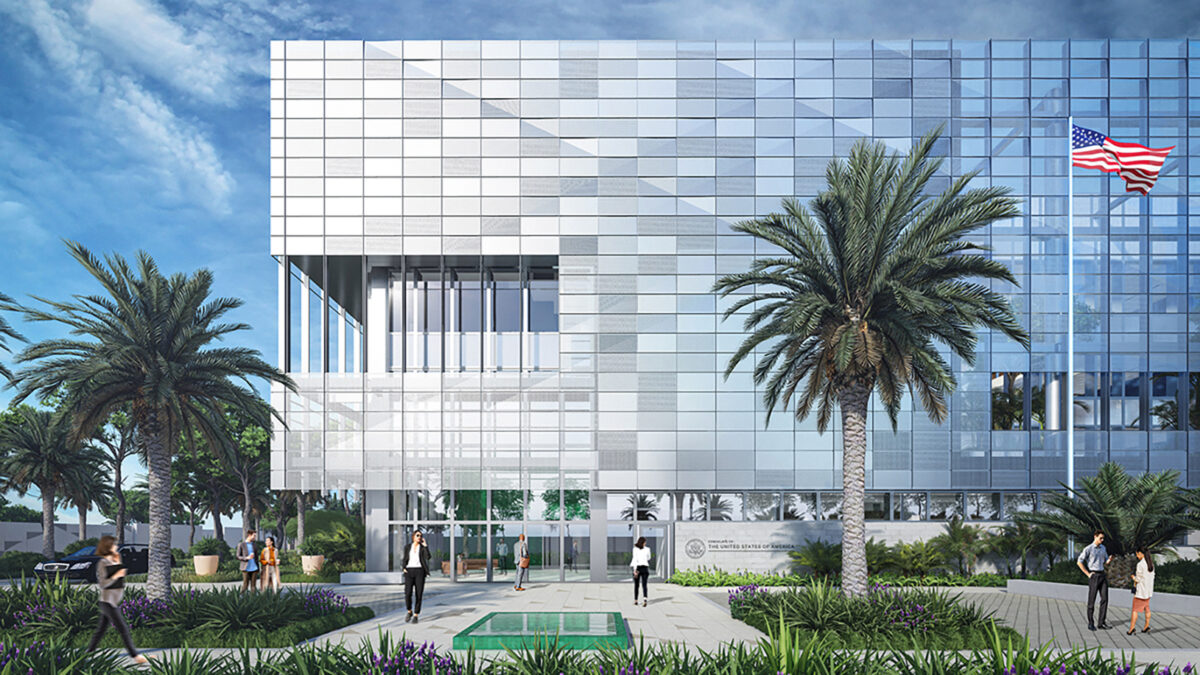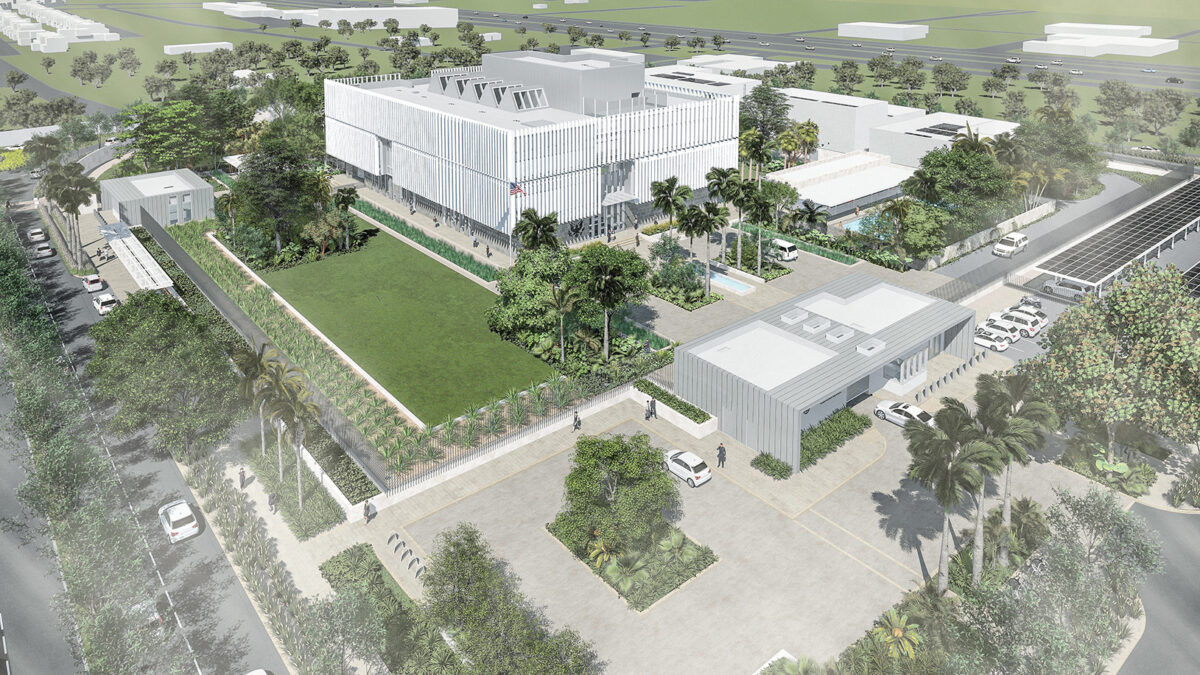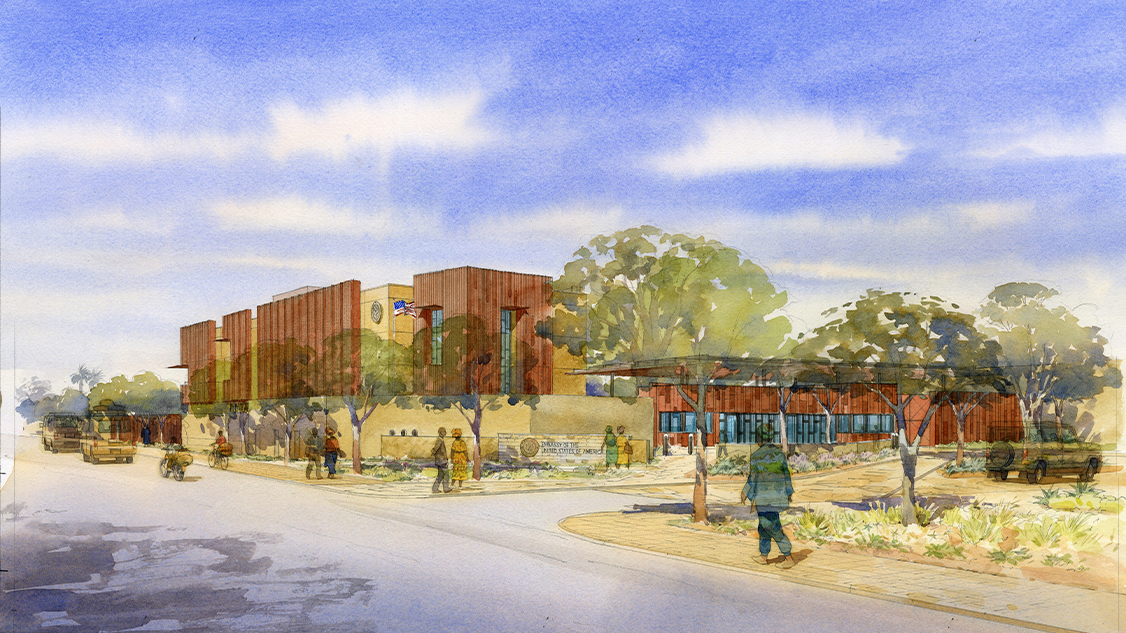
Local culture, history and environmental patterns informed the Niger Embassy Compound’s environmentally-friendly landscape design.
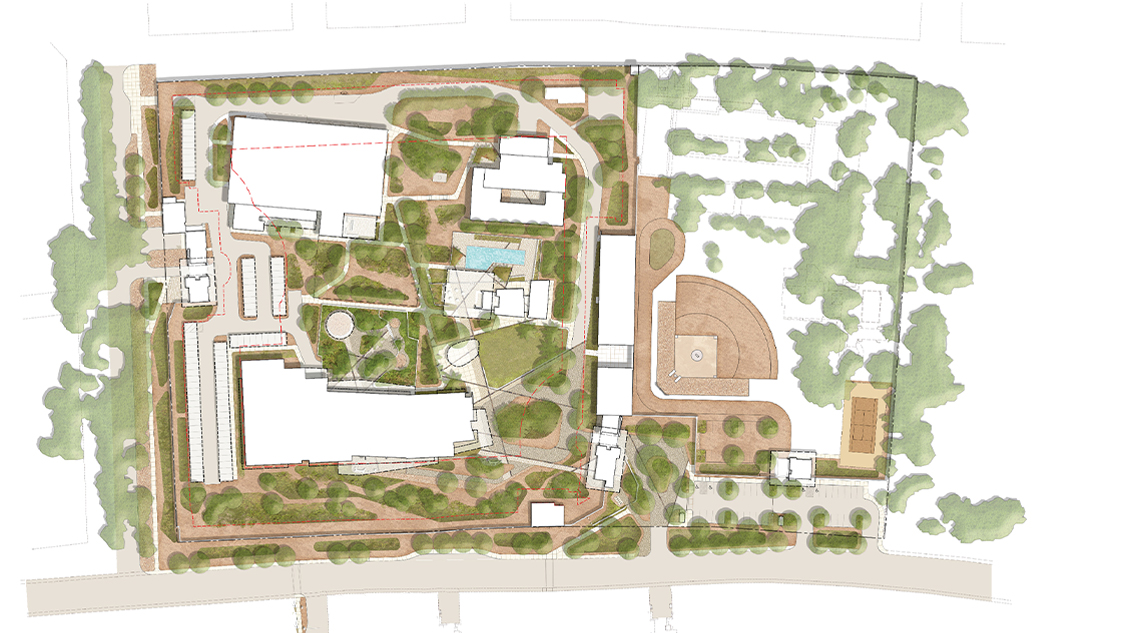
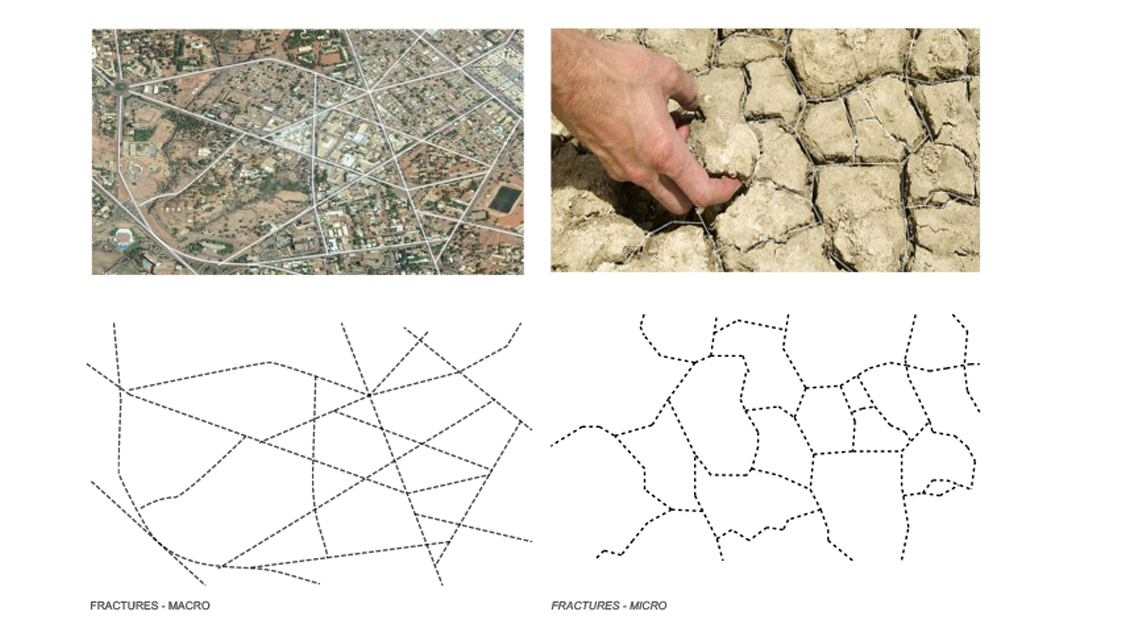
Fractal Geometry- Macro and Micro
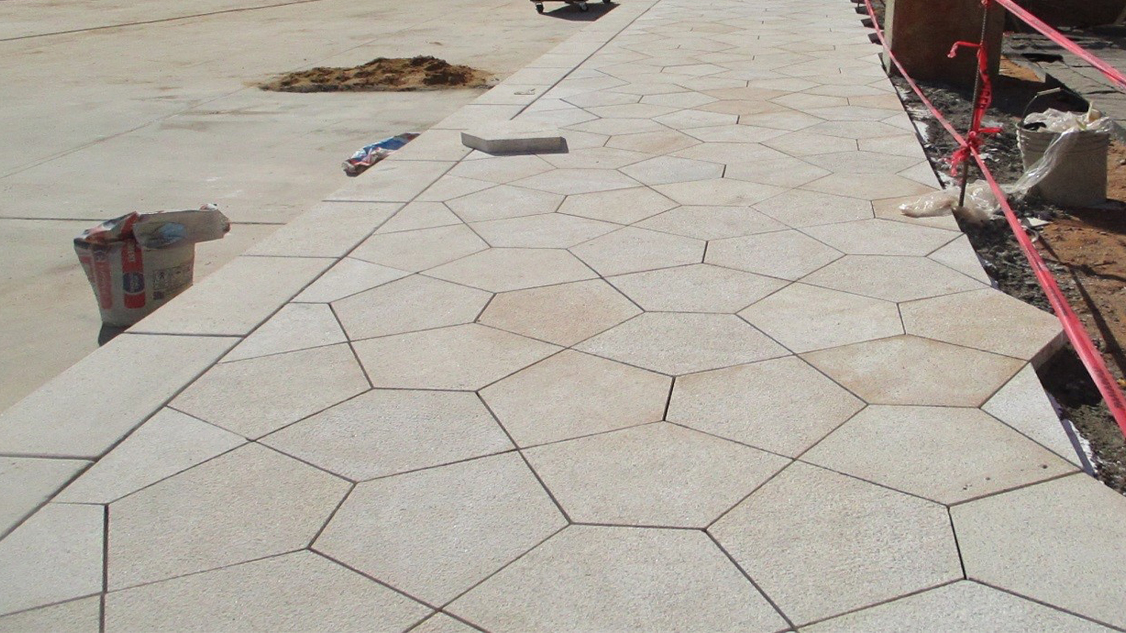
Tessellating Cut Stone Pattern at Main Entrance
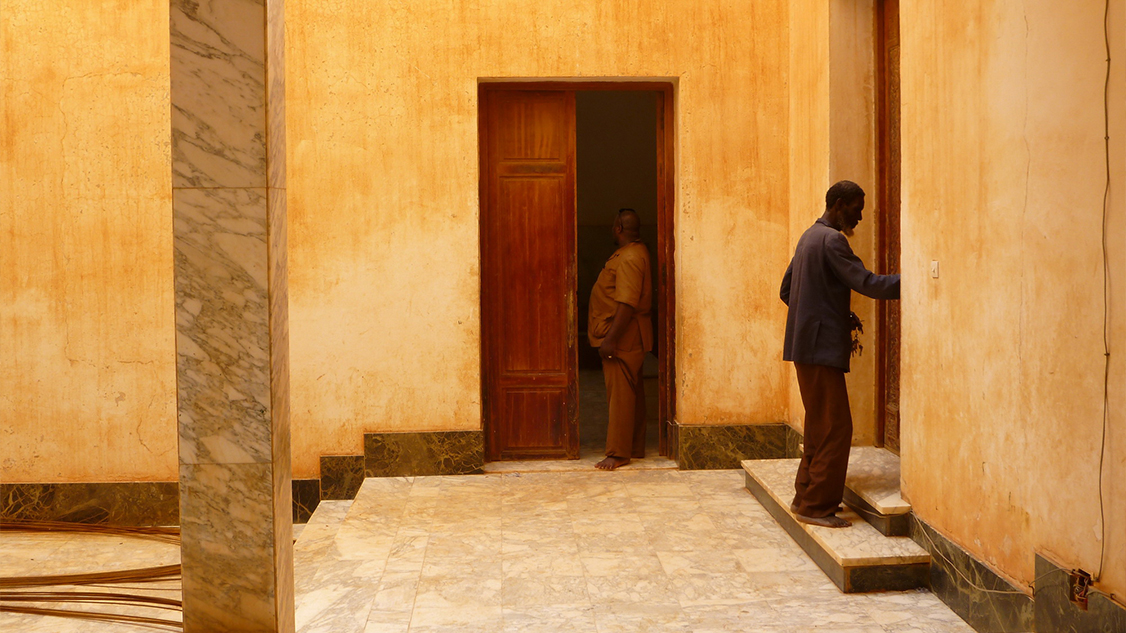
Sand-hued Masonry Color Inspiration
For Knot, all design is local. And none more so than the newly renovated U.S. Embassy Compound in Niamey, Niger. With its arid climate and withering temperatures averaging in the 90s, Niamey’s U.S. Embassy Compound was a challenge for Knot’s team. Capturing the essence of Niamey through studying the Nigerian capital’s landscapes and ecology, Knot focused on a landscape design solution that drew ecological inspiration from the region’s sometimes harsh environment—located in a zone between the tropical West African coast and the Sahara Desert. The team’s design celebrates the beauty of the native landscape and meets the U.S. Department of State Bureau of Overseas Buildings Operations requirement to achieve the highest sustainability goals.
Knot’s design focuses on and takes cues from local culture, history, and environmental patterns. The 11-acre compound includes an administrative building, security guard residence, community facilities, and additional support buildings. Designed to LEED Platinum standards, the embassy compound is designed to treat all its wastewater to provide 87 percent of irrigation needs. It will have solar panels on a scale larger than any other U.S. embassy. A consular garden extends from the consular entrance near the center of the building. A grove of mature trees provides much-needed shade, while bio systems capture rains that sometimes deluge the region.
Technical guidelines for all U.S. Department of State Bureau of Overseas Buildings Operations embassy compounds create a clear path for building and landscape designs. A study of how people in the region interacted with and manipulated the land gave insights that informed the design. The country’s high annual average temperatures, accompanied by periodic rain downpours and high winds, inspired a sustainable landscape design that protects staff and visitors.
Adaptation and scarcity are themes that define the local ecosystem. Knot’s contextual research of the culture, its climates, and ecological landscape led to selecting plants and trees in harmony with the sub-Saharan surroundings. An understanding of spatial organization revealed in native tiger bush vegetation patterns inspired the site’s design and plant selection.
